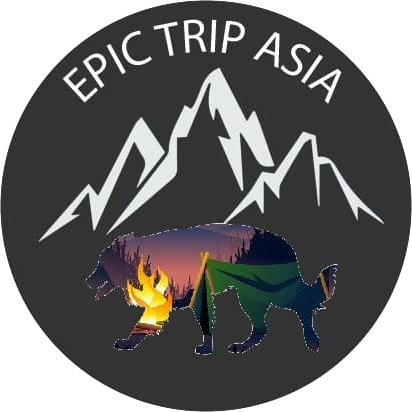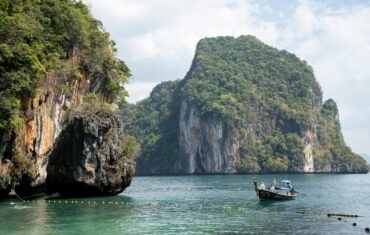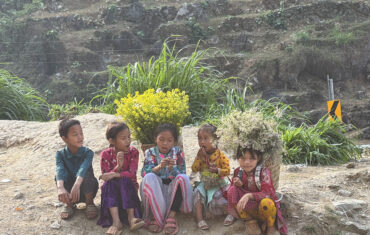The Kingdom of Cambodia is known as “the land of pagodas,” a place where the pristine beauty and majestic architectural ensembles of the ancient temples of Angkor hold numerous mysteries. The collapse of the Khmer Empire has left an indelible mark on this land, bearing witness to one of the greatest civilizations in human history.
Cambodia, also known as the “Kingdom of Magic,” takes pride in having escaped the crisis of war. In just a few short years, the country has overcome the pain caused by conflicts and has transformed into an attractive and highly promising tourist destination. Its impressive monuments and colorful culture stand as a testament to its resilience.
GEOGRAPHY
Located in the southwest of the Indochina Peninsula, Cambodia borders Thailand to the north and west, Vietnam to the east and southeast, Laos to the northeast, and the Gulf of Thailand to the south. Phnom Penh serves as the capital and the political, economic, and cultural center of Cambodia. With a surface area of 181,035 km2, the country is characterized by half of its territory being comprised of plains concentrated in the south and southeast, while the remainder is dominated by hills and mountains. Cambodia boasts a concentrated river system in major basins, with the Mekong River flowing from north to south through the country. Upon arrival, you can immerse yourself in the fresh air and the simple serenity of a rustic land.
CULTURE
Ninety percent of Cambodia’s population are Khmers. Buddhism is the national religion of the country and is considered a guiding force in the social standards of everyday life for the local people. In addition to Buddhism, other religions such as Christianity and Islam are also practiced. Cambodians live discreet, simple, and polite lives. They greet each other in the traditional way, with palms pressed together at the chest and a slight bow of the head as a sign of respect.
Cambodian culture is equally captivating. The Cambodian people, known for their kindness and hospitality, take pride in their cultural heritage and unique traditions. The traditional Cambodian classical ballet, known as Apsara, combines grace and elegance in its movements, telling stories through dance. Furthermore, the country celebrates numerous festivals throughout the year, such as the Water Festival of Bon Om Touk, where colorful floating boats and boat races enliven the waters of the Tonle Sap River.
The country is famous for its numerous ancient temples, with three World Heritage sites: Angkor, Preah Vihear, and Sambor Prei Kuk. When you arrive in this land, you will be amazed by the majesty and splendor of the ancient temples, where time is etched into every stone and where old trees emerge from the temple roofs.
CURRENCY
The official currency of Cambodia is the Riel, although the US dollar is also widely used. Typically, the Riel is used for smaller transactions, such as purchasing items for less than 5 dollars, renting mototaxis, or traveling to rural areas. There are coins available in denominations of 50, 100, 200, and 500 riel, while banknotes are available in values of 50, 100, 200, 500, 1,000, 2,000, 5,000, 10,000, 20,000, 50,000, and the highest denomination of 100,000 riel.
Currently, coins have limited circulation, and the higher-value banknotes are also relatively scarce. US dollars are widely accepted and used for payment in restaurants, hotels, and taxis in many instances.
SAFETY
Cambodia is a beautiful and relatively safe country. Especially in major cities, the protection of tourists’ rights and safety is given high priority by the security forces. However, like anywhere else in the world, there are always people with good and bad intentions. Therefore, it is recommended to avoid going alone to deserted places at night. In such cases, it is better to take a taxi and take a photo of the license plate to send to friends and family before getting in. It is also advisable to carry important items such as bank cards, money, and your mobile phone, and to negotiate the price carefully before taking a moto-taxi or tuk-tuk. It is advised not to venture into forests or empty fields without a guide, and to avoid crossing border areas without proper border gates.
HEALTHCARE
The healthcare infrastructure in Cambodia is not on par with European standards, and private medical facilities can be quite expensive. However, in recent years, healthcare services in Cambodia have made significant progress, thanks to a highly skilled team of medical professionals.
It’s important to note that there are some common diseases in Cambodia, such as avian flu, hepatitis, malaria, dengue fever, and intestinal parasites. It is advisable to consult your doctor before traveling to Cambodia to receive the necessary information and vaccinations.
TRANSPORTATION
Currently, traffic in Cambodia is gradually changing and improving its road network according to international standards, resulting in significant enhancements. The country is also undertaking more than 21 major transportation projects to connect various heritage sites. The main modes of transportation in Cambodia are air, sea, and land (road and rail).
You can enter and exit the country by air, and the most popular way to travel within Cambodia is by bus, minivan, or tuk-tuk. Compared to other countries in the region, traffic density in Cambodia is relatively low. In rural areas, it is common to see the use of ox carts or horse-drawn carriages as means of transportation. It’s worth noting that Cambodia experiences fewer accidents, which is why traffic police presence is less common in rural areas.
THE CLIMATE
Cambodia has a monsoonal climate characterized by distinct dry and rainy seasons that last for a relatively equal period of time. Temperatures and humidity are generally high throughout the year.
The rainy season spans from May to October, with average temperatures ranging from 26 to 28 degrees Celsius and humidity levels that can reach up to 85%. On the other hand, the dry season begins from November to April of the following year, with temperatures that can soar up to 40 degrees Celsius.
During the dry season, particularly from November to February, the climate is cool, with temperatures dropping as low as 20 degrees Celsius. This period is considered the best time to visit Cambodia. Conversely, between March and May, the weather is hot, making it suitable for beach vacations along the coast.
From June to October, rainfall is common in the afternoon, which helps alleviate the heat but also increases the humidity levels above 85%.
TOURISM
The Kingdom of Cambodia is a stunning tourist destination in Southeast Asia that attracts visitors from all over the world. Its rich history and breathtaking natural landscapes, along with its ancient relics like the temples of Angkor, make it a fascinating country to explore.
Cambodia is divided into five key tourism regions: the capital city of Phnom Penh, Oudong, Siem Reap, Ratanakiri, and Battambang. The Cambodian government strives to preserve and protect its valuable heritage while promoting tourism development.
Phnom Penh, known as the “Pearl of Asia” in the 1920s, continues to captivate with its blend of Khmer culture and French architecture showcased in its impressive architectural works.
The temples of Angkor, designated as a UNESCO World Heritage site, represent Cambodia’s historical and cultural treasure. The renowned Angkor Wat temple is an architectural marvel with intricately hand-carved reliefs, majestic towers, and imposing staircases that transport us to a bygone era filled with splendor and spirituality.
But the beauty of Cambodia extends beyond its ancient temples. The country offers lush and diverse nature, with tropical jungles, stunning beaches, and meandering rivers. The Kampong Phluk Bay, for example, is an impressive flooded forest where visitors can explore mangroves and discover the fascinating aquatic life surrounding them.
For adventure enthusiasts, Cambodia also offers thrilling experiences such as exploring the jungle-covered temples of Beng Mealea or embarking on a kayaking tour of the country’s rivers and lakes. Ecotourism enthusiasts can enjoy wildlife encounters in protected areas like Virachey National Park, home to elephants, tigers, and a variety of bird species.
Cambodia is like a spaceship taking us through space and time to immerse ourselves in the untamed beauty of nature. Upon arrival in this country, you’ll be awestruck by the towers, temples, and sprawling corridors, all crafted from intricately stacked stones that blend harmoniously with their surroundings.
THE GASTRONOMY
Cambodian cuisine is unique and heavily influenced by India and China, featuring mild, sweet, and oily flavors. It also shares similarities with the culinary cultures of neighboring countries such as Vietnam and Thailand. For example, the Cambodian sandwich is somewhat similar to the Vietnamese version, although the taste is slightly different. In general, Cambodian dishes are somewhat similar to Thai cuisine, but they tend to be less spicy and acidic.
As part of the rice civilization in Asia, Cambodians have a tradition of eating rice with fish more than meat. Additionally, during important festive occasions throughout the year, savory or sweet cakes made from sticky rice are always present.
When discussing Cambodian gastronomy, we cannot overlook the famous fried insect dishes. We understand that many tourists might be hesitant to try these dishes, but when you travel to Cambodia, you can easily find them in local markets, with typical options including cockroaches, spiders, beetles, and even scorpions. Beyond these adventurous and exciting dishes, there are also other culinary delights worth enjoying, such as Amok Trey (fish coated in a thick coconut milk sauce), Ansom Chek (sticky rice cake wrapped in banana leaves), Jaggery wine, and, of course, the famous Nom Banh Chok (Khmer noodles) and Lap Jemer (Khmer-style beef salad).
Cambodian culinary culture is primarily passed down from generation to generation, ensuring that the dishes retain their original flavors harmoniously blended with a touch of modern taste.
ART
The architecture of Cambodia is widely known for its magnificent works built during the Khmer Empire in the late 12th and early 13th centuries. Buddhism and mythological thinking played a significant role in the artistic decoration of these grand architectural masterpieces. The structures of that time were crafted from wood, bamboo, thatch, and stone. Additionally, intricately carved characters and numbers can be easily found in the works.
You will be mesmerized by the countless carved figures, such as Buddhas, dancers, warriors, and lotus images, illustrating the epics of the Ramayana and the Mahabharata. These sculptures stand out for their vividness and uniqueness, captivating the attention of all visitors.
In general, the temples feature distinctive pointed peaks, with all four sides adorned with reliefs depicting life beyond Earth, the lives of the Cambodian people during that period, or battles against neighboring countries.
Through these works, we admire the extraordinary strength and skilled hands of the ancient Khmer people. Cambodian architecture has also greatly influenced Thai architecture and that of the Cham people in Vietnam.
THE BEST TIME TO VISIT CAMBODIA
During the dry season, which spans from November to February of the following year, the weather in Cambodia is pleasant and cool, with scarce rainfall and clear skies. This period also coincides with the peak tourist season in Cambodia, making it an ideal time to visit.
Between March and May, the weather becomes hot, with temperatures reaching up to 40 degrees Celsius. If you are traveling during this period, it is advisable to wake up early in the morning to visit outdoor structures and avoid the midday heat. Additionally, in April, the Chol Chnam Thmay festival is celebrated, marking the Cambodian New Year and providing a unique opportunity to immerse yourself in the local culture.
Between June and October is the rainy season in Cambodia, with September and October being the months of highest precipitation. Despite the rain, temperatures are generally milder, creating a pleasant climate for exploration. This period also attracts many tourists as it coincides with summer holidays in other countries. Furthermore, it is the perfect time to take advantage of the best promotions of the year in terms of accommodation and activities.
In addition to information about the weather, it is important to prepare the appropriate items for your visit, such as suitable clothing for the weather, sunscreen, sunglasses, and hats. For outdoor activities, it is recommended to wear sports shoes or sneakers, and for general travel, comfortable and sturdy sandals.
Enjoy your visit to Cambodia and make the most of the chosen time of year. Wishing you an unforgettable trip!
WHAT YOU NEED TO KNOW BEFORE TRAVELING TO CAMBODIA:
- Traditional greeting in Cambodia involves a bow with palms pressed together in front of the chest and a slight forward inclination of the head.
- Avoid touching anyone’s head or hair as the head is considered a sacred part of the body. Also, refrain from touching the heads of children.
- When visiting temples or sacred sites like the Royal Palace, it is important to dress appropriately with long sleeves and modest attire to show respect.
- It is advisable to have travel insurance in place before traveling to Cambodia, or any country for that matter, to ensure complete protection during your time abroad.
- Pay attention to the preservation of valuable items, as mentioned in the safety section above.
- Please maintain a respectful distance from monks, especially for women. Avoid getting too close or touching a monk’s body, as it is considered taboo. Speak politely to monks, maintaining a formal and courteous tone, whether inside the temple or on the street.
- Avoid eating or handing things with your left hand. Additionally, when offering something to locals, use your right hand, as it is considered a gesture of good manners in Cambodian culture. Using the left hand is seen as unclean.
Keep these guidelines in mind before traveling to Cambodia to ensure that you respect the local culture and have a wonderful experience. Enjoy your trip!








